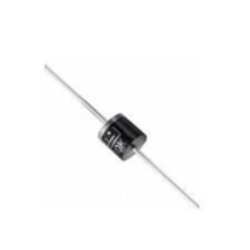Date:2025-07-30 Categories:Product knowledge Hits:394 From:Guangdong Youfeng Microelectronics Co., Ltd
negative (cathode) lead. The positive electrode lead is generally marked with an arrow or marked end, while the negative electrode lead is the other end. In addition, it can also be identified by features such as size, shape, and color of the appearance.
2. Component identification: Crystal diodes are usually labeled with information such as model, manufacturer, batch, etc. on the housing. You can identify it by consulting relevant information or asking the manufacturer.
3. Data manual: Detailed parameters and specifications of crystal diodes can usually be found in their data manuals. You can search for accurate information by model or manufacturer name.
6、 Testing:
1. Positive voltage measurement: Use a multimeter or digital voltmeter to connect the positive lead to the positive pole and the negative lead to the negative pole, and then measure the voltage. If the measured voltage is within the normal operating range, it indicates that the diode is functioning properly. Otherwise, there may be a malfunction.diode
2. Reverse voltage measurement: Using a multimeter or digital voltmeter, connect the positive lead to the negative lead and the negative lead to the positive lead, and then measure the voltage. Under normal circumstances, the voltage of a diode should be very low, close to zero. If a large voltage is measured, it indicates that the diode may have a fault.diode
3. Current measurement: Use an ammeter to measure the forward and reverse currents of a diode. Under normal circumstances, the forward current should be within the rated current range, while the reverse current should be very small. If the current exceeds the rated value or the reverse current is large, it indicates that the diode may have a fault.diode

Previous: Classification, Structure, and Principle of MOSFET